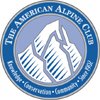“Russians are endowed with the native facility of making the best of what would be disastrous for anyone else.”—Eric Newby, The Big Red Train Ride.
Jonathan who stood nearer, cried, “He fell!”
Nooo, there’s no falling here. We were 300 feet up. But he was gone and it was silent.
What is happening? I was suspended between a moment of disbelief and reality.
Oleg, the old man’s son, broke the silence with eerie laughter, pointing down a gaping chimney. Thirty feet down was Valery, stuffed to a stop, leg bloodied, but not dead. He wrestled his way back up and tackled the very same slab he had moments before slipped off.
In a frantic panic to escape the ledge and the several other climbers assembled there, I scratched up the same 5.9 slab to the summit.
The summit, however, offered little serenity. There were dozens of people, most of them ‘tourists’ in shabby sneakers or barefoot, who had come up various other routes, scrambling about un-roped, with seemingly little regard for the exposure and potential disaster. This was crazy! John, in his southern drawl said, “Man, this shit would be illegal in the States!”
Although we had seen pictures and heard stories of the happenings of Stolby before coming here, I, myself, had never fully grasped the reality of it all. Imagine dozens of people, toddlers to elderly, some with picnics, others with guitars, young boys with eager young girls, families of three generations and Russian climbing champions, all congregated on this beautiful, Siberian Indian summer afternoon, some three hundred feet off the deck.
An hour later—
We reached the ground. This was the other terrifying part of climbing in Stolby; no ropes meant no rappels. We had to down climb everything.
I stood waiting near the base for Jonathan, John and our Russian friends. I looked up a hundred feet at the three-foot high Cyrillic letters painted on the main face. I was told the graffiti translated meant “Freedom” and had been there for over a hundred years. I realized that the taiga forest we were in had provided a freedom, of sorts, for Soviet/Russian people for over 150 years. I also thought about the fact that there was a time, not too long ago, in the era of Gulags, that
Jonathan joined me and we waited for John, who is constantly fumbling around with camera cases and lenses, to stumble down. Meanwhile, I watched the continuous parade of people ascending the rock. I heard a loud thud and turned to see something brown hit a ledge, hard, and disappear into the trees, out of view, but again heard a loud thud as it hit the ground. My consciousness told me it was a pack. Minutes later, I saw someone running through the foliage toward the area where the pack landed. Jonathan had surreptitiously walked off. More people started running and I heard a shriek. Other people spoke in hushed Russian as they continued down the trail. Two of our Russian friends were on cell phones. Where was Jonathan! I started to worry and slowly walked toward the place, near the cliff, where a few people were standing. Two of our Russian guides were crouched down in the brush, Jonathan stood just behind. “Jonath..” I whispered. He shook his head at me and pointed back up the hill. His pained expression and wet eyes told me it wasn’t a pack.

No comments:
Post a Comment